Get Your Food Right
Rowing is a full body workout, and can burn anywhere from 500-1000 calories per hour. Therefore, you need to adequately fuel your body in order to perform and execute your workouts properly. As a starting point, ensure you are getting three healthy and balanced meals per day. These should consist of lean protein, vegetables and fruit, and whole grain or other natural carbohydrate.
In addition, you should be eating both before and after a rowing workout to fuel and then refuel your body. 30-45 minutes before a workout, try to consume 100-200 calories of healthy carbohydrates like whole grain crackers, an apple, a peanut butter sandwich on whole grain bread, whole grain cereal, or oatmeal. Stay away from added sugar, like that found in granola, granola bars, sports bars, or many cereals.
After a workout, you should consume an additional 300-500 calories within thirty minutes of completion. Your snack should contain a 3 to 1 ratio of carbohydrates to protein, with 15-20g of protein. Eat a banana with peanut butter, greek yogurt with berries and almonds, or an egg and cheese sandwich on a whole grain english muffin. Proper nutrition will help you to feel better during your workouts and to get ready for the next session.
Hydrate, Hydrate, Hydrate
If you want to stay properly hydrated and have enough energy for your next rowing workout, carry a water bottle with you throughout the day. You should be drinking a total of 64 oz of liquid (water is best) over the course of the day, in addition to what you are drinking during your workout.
During your workout, you should consume an additional 24-32 oz of liquid. Again, water is best, unless your workout is longer than 60 minutes of total work. If that is the case, then you should use a liquid containing electrolytes with a low sugar content.
Buying a reusable water bottle and having it with you at all times will ensure that this easy, yet important, recovery technique is mastered.
Get Some Rest
Any rigorous exercise regime requires a good amount of rest. You should be getting at least eight hours of sleep per night. Your muscles will be tired and sore from the work, so the more rest you get, the better you will recover.
Also make sure you are taking days off of rowing in order to let your body heal and recover. That can mean switching to an exercise you are more used to for a day, like running or hiking, or even taking a day off to completely rest if you are especially fatigued.
Roll It Out
A foam roller is a rower’s best friend. The foam roller is used as a self-massage tool to increase flexibility in tight muscle groups. It is also used as an aid to muscle recovery. By foam rolling, you are increasing blood flow and helping to flush the lactic acid produced during a hard workout out of your muscles, which helps them to recover faster.
Five rolls (toward the heart) per muscle group should be performed one or two times per week after an intense workout. Tight or problem muscle groups can be rolled daily.
Below are some techniques to use when foam rolling the major muscle groups:
Quads
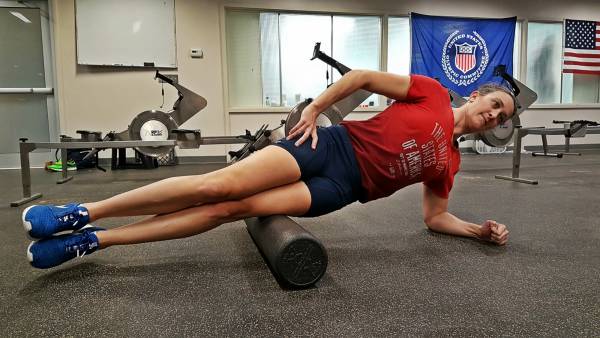
IT Band
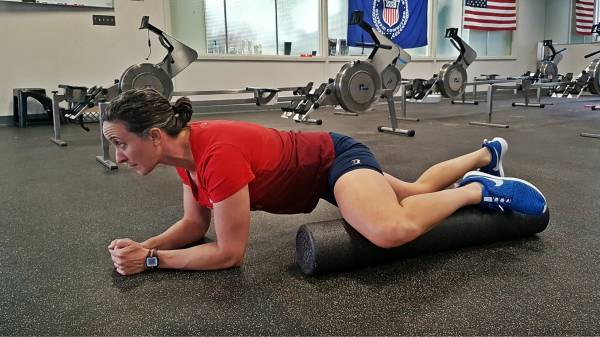
Adductors
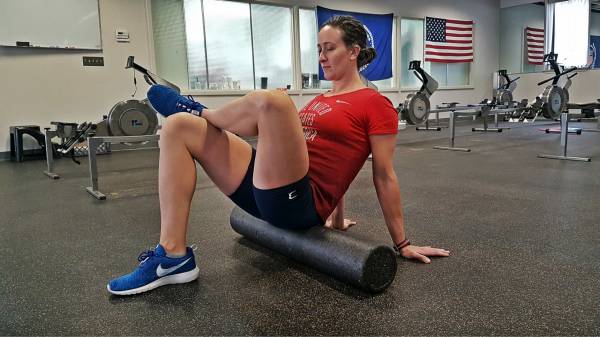
Glutes
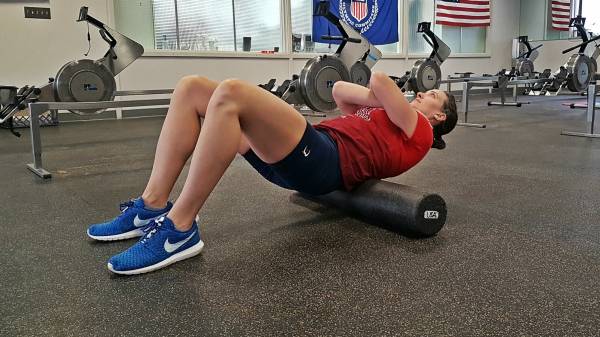
Low back
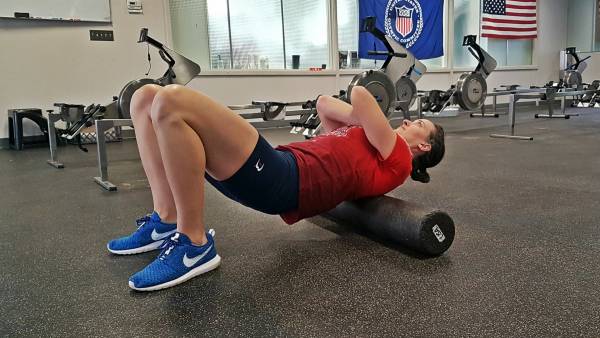
Upper back
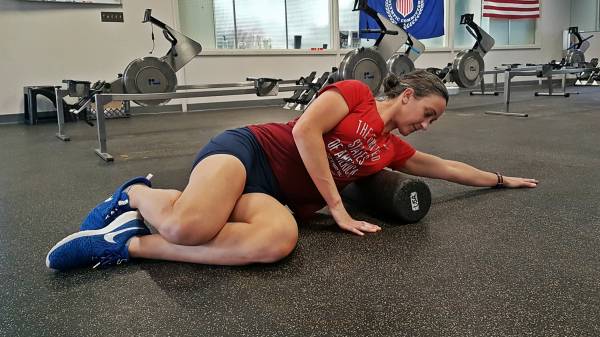
Lats
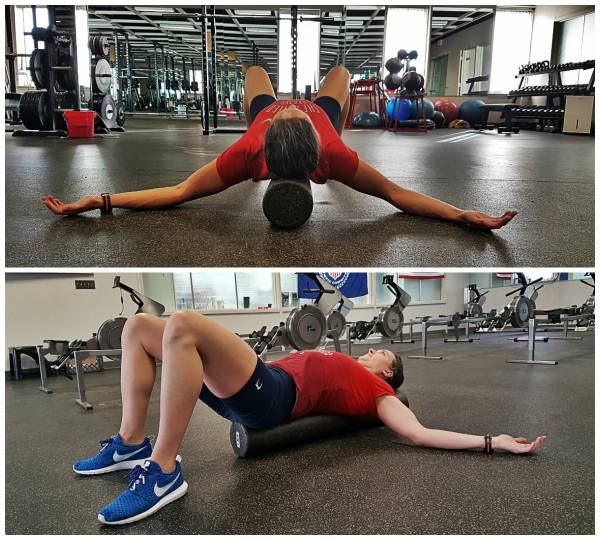
Chest opener: Lay full-length on the roller with arms spread out to both sides. Streches the pectoral muscles.
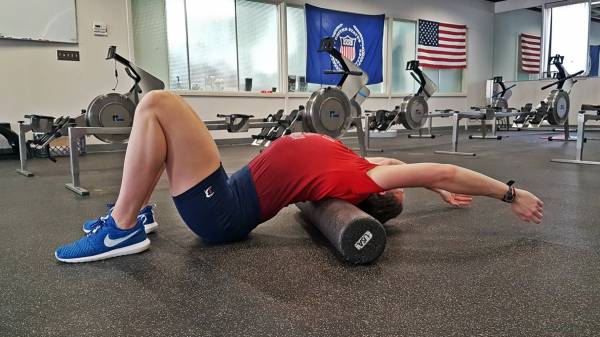
Thoracic mobilization: Lay perpendicular over the roller with arms stretched overhead.
Don’t neglect your accessory work:
The Comprehensive Rowing Warm Up and Cool Down






